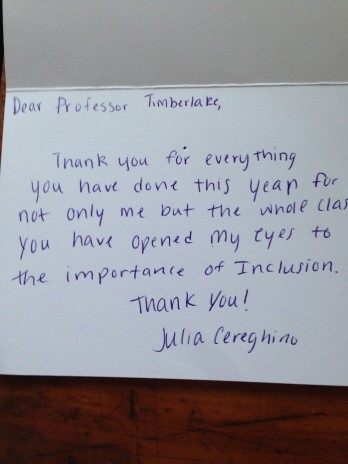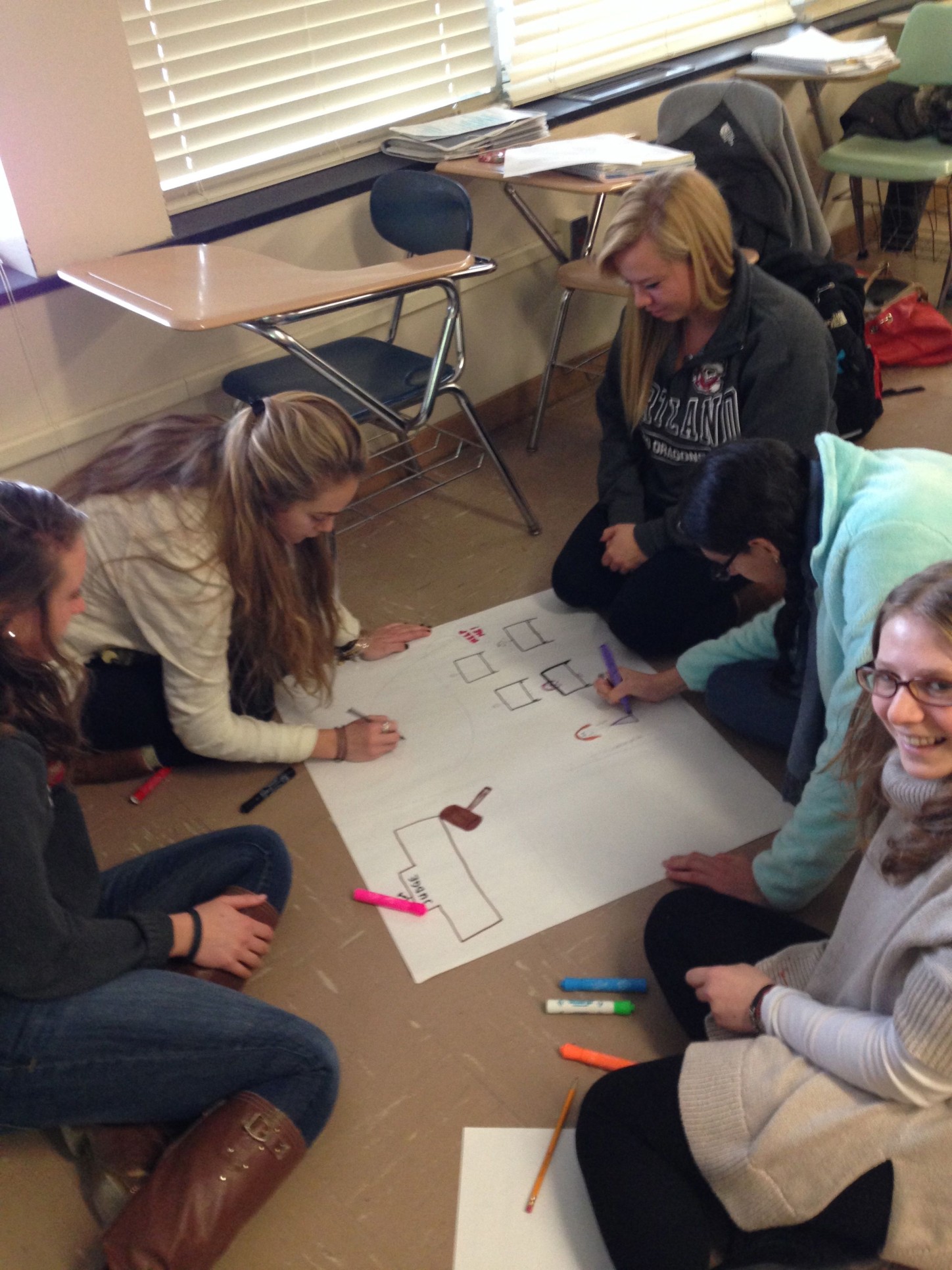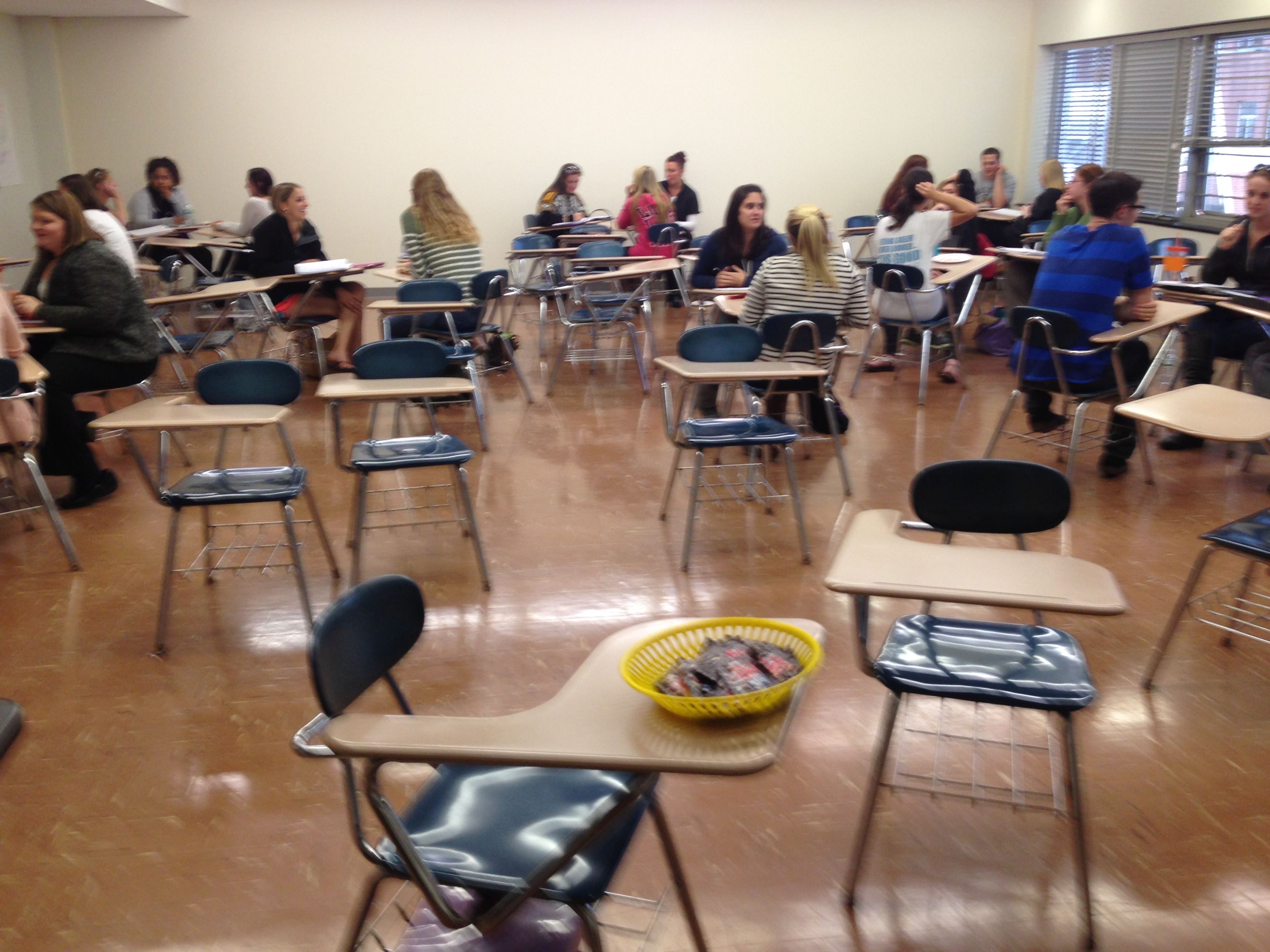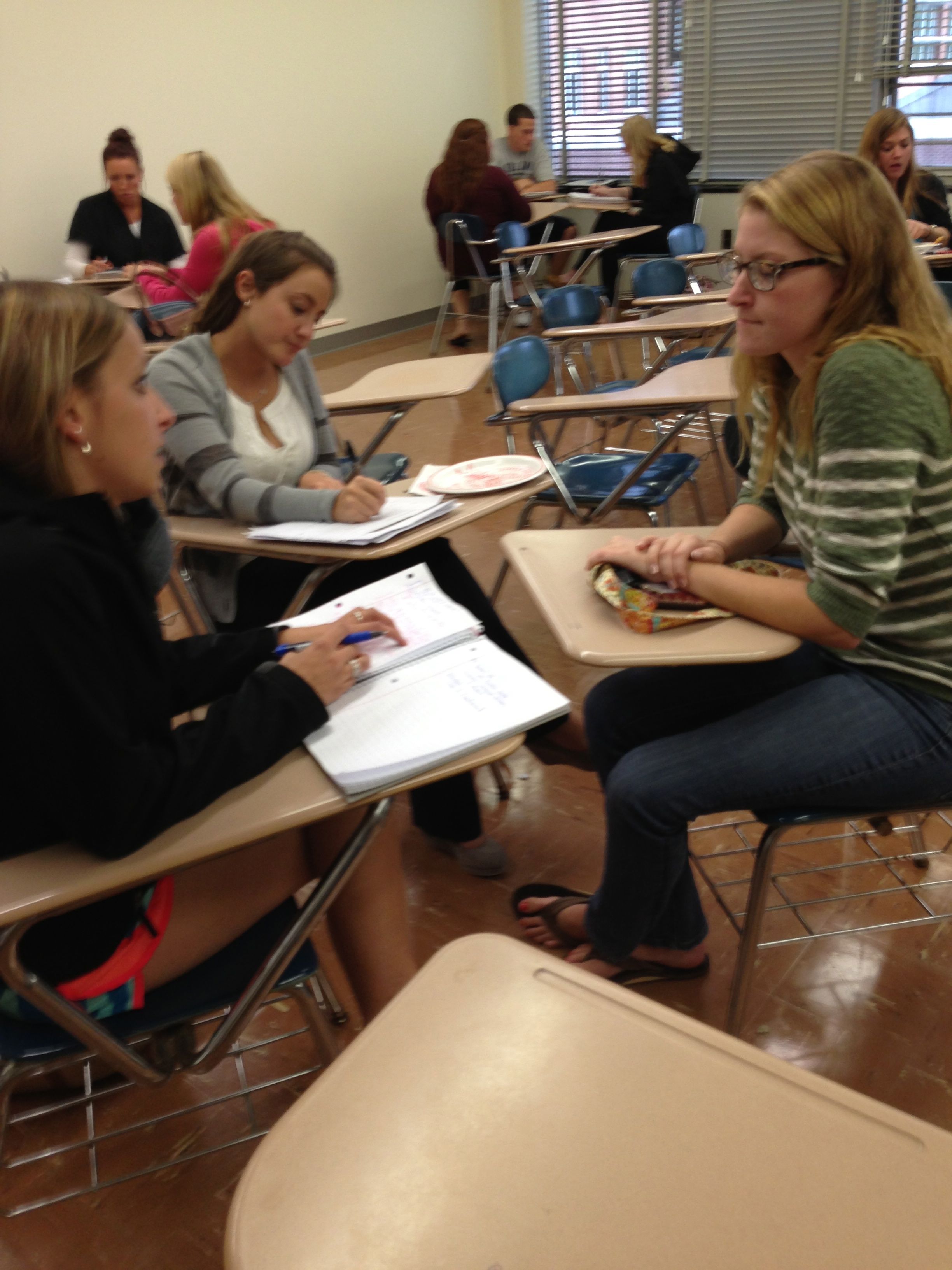Teaching Experience
| Date | Position | Course Content | Location |
| Spring 2013-Spring 2014 | Assistant Professor | Special Education Educational Research | SUNY Cortland |
| 1997-2008 | Adjunct Instructor For Graduate Education | Special Education Physical & Medical Disabilities | University of Maine Orono, ME |
| 2004-2005 | Adjunct Instructor | Historical Foundations of Special Education | Kennebec Valley Community College Fairfield, ME |
SUNY Cortland Teaching
|
Spring 2013 |
Fall 2013 |
Spring 2014
|
| FSA 600 sec 1 Inclusive Education Pedagogy Enrollment 18 | FSA 210 Principles of Inclusive Education FSA 211 Field Placement sec 1 Enrollment 24 |
FSA 530 Assistive Technology & Alternative & Augmentative Communication Enrollment 20 |
| FSA 600 sec 2 Inclusive Education Pedagogy Enrollment 18 | FSA 210 Principles of Inclusive Education FSA 211 Field Placement sec 2 Enrollment 23 | FSA 600 Inclusive Education Pedagogy Enrollment 29 |
| FSA 651 Understanding & Conducting Educational Research Enrollment 11 | FSA 651Understanding & Conducting Educational Research Enrollment 18 | FSA 652 Master’s Project Enrollment 14 |
SUNY Cortland Course Teacher Evaluations
See links below for copies of CTEs for undergraduate and graduate courses.
https://maria-timberlake.com/ctes-undergrad/
https://maria-timberlake.com/ctes-grads
Syllabi:
https://maria-timberlake.com/syllabus-fsa-600/
https://maria-timberlake.com/syllabus-fsa-210/
I keep a memo book and record brief reflective notes and ideas after every class. Click this link to read my reflection on the aspects of teaching I found most challenging and what I did and will continue to do to address them.
https://maria-timberlake.com/455-2/
https://maria-timberlake.com/teaching-reflection-graduate/
Peer Teaching Evaluations
Please click the link below to read my teaching observation conducted by David Smukler on November 7, 2013.
https://maria-timberlake.com/teaching-obser…-by-dept-chair/
Other evidence: I have included five pieces of evidence here for your review. Each reveals a different component of teaching effectiveness.
(1) The first is the midterm exam for FSA 210. Please note that I used the same values and practices in my instruction and assessment that I was teaching the students to use in theirs. Specifically, I gave them a choice of questions to answer and created questions that aligned with different learning styles and multiple intelligences. I showed them how the design of the midterm reflected Bloom’s taxonomy (and how our first quiz had been the knowledge level and we were now building higher). One question required a sketch instead of a narrative of universal design, another required them to watch a video and describe the teaching strategies, another asked them to use a digital tool (bookbuilder) to show what they’d learned, other questions provided scenarios and asked for their response.
Please click here to see the midterm exam
(2) The second piece of evidence is photos of my FSA 210 students engaged in classroom activities. Although I’ve taught graduate students, adult learners at a community college, high school and elementary school students, FSA 210 were my first undergraduates. Over the semester I got a sense of what their interests, background knowledge, expectations and competencies were. I interspersed short lectures (10 -15 min) for students who learn auditorily and enjoy the traditional teaching style with other active options. I believe that group activities must have a clear purpose and not simply be “activities”. I experimented with having them work individually, in pairs, in groups of their choosing, and in randomly designed groups. They enjoyed the activities and I was happy with their participation overall, but some groups finished “early” and my challenge was to push them to go a little deeper. After giving them examples of what I considered “on” and “off” task group behavior, and illustrating how each group played an important role in contributing to the expertise in the class, they produced better group outcomes.
(3) The third item is the cover page from the final assignment in FSA 600. I did not change the assignment, there’s a CEC rubric in place and the assignment is part of the NCATE reporting. However, I did supplement the assignment with key pieces I added as FSA 600 content. Specifically, I asked them to: (a) include how they would build an inclusive community in the classroom, (b) list specific activities from the text (Talking Sticks & Tutor Scripts) that they’d incorporate into the lesson, (c) list 3 specific strategies presented by their classmates that they’d use and (d) sketch a blueprint of the classroom set up.
This is significant because each requirement synthesized a different aspect of the course into the final project. So, (a) asked them to situate the academic content in the larger classroom community (b) “made” them use the text as a resource, (c) required them to incorporate something they’d learned from their peers in the course and (d) pushed them to illustrate what the design part of universal design could mean.
Click here to see the cover page for the assignment: https://maria-timberlake.com/fsa-600-final-…-thematic-unit/
(4) The fourth item is two photos taken during a session of FSA 651, the graduate research class. When I taught FSA 651 for the first time, the students practiced interviewing each other and I wasn’t quite satisfied with the caliber of the activity. There was an element of “reality” that I felt would have strengthened their investment in attending to their interviewee and maintaining the flow of a good interview. However, they were only being introduced to research procedures and needed “low-stakes” practice. This fall I invited my undergraduates to attend a session of FSA 651 and serve as interviewees. The grad students prepared questions and worked in pairs, one person conducting the interview and the other observing and then giving feedback about the process. For the price of pizza and a little extra credit, I was able to provide more of a “real” interview experience for the grad students.
(5) The fifth item is an assignment that I developed for FSA 600 and then adapted for use in FSA 210. The reason for highlighting it here is that I explain to students in both the graduate (600) and the undergraduate (210) inclusive pedagogy classes that good teachers understand and are able to integrate two different perspectives: universal and special. Both are necessary to creating successful inclusive experiences.
Without an understanding of universal access, teachers may create strong self-contained instruction but will be less successful at creating inclusive classrooms. Without expertise in specialization, teachers may create warm welcoming classrooms that lack the specific accommodations or strategy instruction that some students require. The focus of these classes weaves back and forth so the students become more adept at both. This assignment is a way to teach specialized strategies, but I’m presenting them as strategies you’ll have in your “toolbox” and not as strategies you’ll use if you teach in a specialized setting with a certain “kind” of student.
Click here to see the Specialized Toolbox Assignment: https://maria-timberlake.com/specialized-toolbox-assignment/
Click here to see an example of student work: https://maria-timberlake.com/specialized-st…tudent-example/




